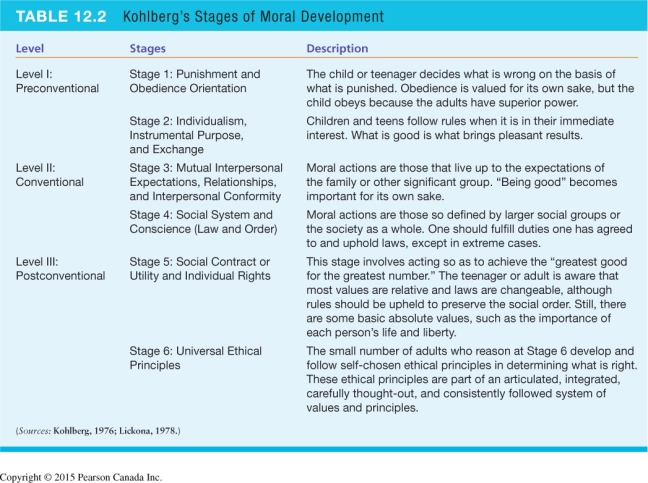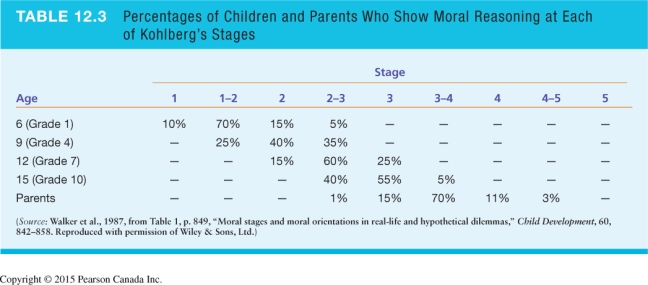A couple of weeks ago I wrote about willful blindness amongst the professoriate. Today, at the risk of some repetition, I’m going to look at the problem amongst the managers of our educational institutions.
In my a previous post, I presented the sorry state of affairs in equipping our graduates with thinking skills. The ability to engage in formal operational thinking may be inherent, but the skills necessary to use formal operational thinking must be taught. With up to 45% of our graduates unable to engage in formal operational thinking, we aren’t doing a good job of teaching it. This is what the higher in higher education stands for, higher thinking skills.
The story of Libby, Montana best illustrates the concept of willful blindness – I’ve provided a link, but reprint it here because it is important to know:
The town had a vermiculite mine in it.
Vermiculite was used for soil conditioners, to make plants grow faster and better. Vermiculite was used to insulate lofts, huge amounts of it put under the roof to keep houses warm during the long Montana winters. Vermiculite was in the playground. It was in the football ground. It was in the skating rink. What she didn’t learn until she started working this problem is vermiculite is a very toxic form of asbestos.
When she figured out the puzzle, she started telling everyone she could what had happened, what had been done to her parents and to the people that she saw on oxygen tanks at home in the afternoons. But she was really amazed. She thought, when everybody knows, they’ll want to do something, but actually nobody wanted to know.
In fact, she became so annoying as she kept insisting on telling this story to her neighbors, to her friends, to other people in the community, that eventually a bunch of them got together and they made a bumper sticker, which they proudly displayed on their cars, which said, “Yes, I’m from Libby, Montana, and no, I don’t have asbestosis.”
But Gayla didn’t stop. She kept doing research.The advent of the Internet definitely helped her.
She talked to anybody she could. She argued and argued, and finally she struck lucky when a researcher came through town studying the history of mines in the area, and she told him her story, and at first, of course, like everyone, he didn’t believe her, but he went back to Seattle and he did his own research and he realized that she was right. So now she had an ally.
Nevertheless, people still didn’t want to know.
They said things like, “Well, if it were really dangerous, someone would have told us.” “If that’s really why everyone was dying, the doctors would have told us.” Some of the guys used to very heavy jobs said, “I don’t want to be a victim. I can’t possibly be a victim, and anyway, every industry has its accidents.” But still Gayla went on, and finally she succeeded in getting a federal agency to come to town and to screen the inhabitants of the town — 15,000 people — and what they discovered was that the town had a mortality rate 80 times higher than anywhere in the United States.
That was in 2002, and even at that moment, no one raised their hand to say, “Gayla, look in the playground where your grandchildren are playing. It’s lined with vermiculite.”
This wasn’t ignorance. It was willful blindness.
It is easy to say that what happened in Libby has nothing to do with higher education. Institutions ignoring the evidence about lecturing and not teaching students higher order thinking skills, and even defending their practices in the face of overwhelming evidence that it is just plain wrong, is willful blindness.
One of the management mantras that is heard over and over again is efficiency. We must strive for efficiency at all cost. Efficiency in teaching means large (or maybe small) lectures. Teaching efficiency, at an institutional level, means lecture theaters. The biggest impact and the most loudly trumpeted signs of institutional capital investment are the big beautiful atriums built to impress, followed closely by the ever larger, better-equipped lecture theaters. The evidence tells us that around 90% of teaching in higher education is done through lectures, and a walk through almost any higher education building will affirm this through the literally hundreds of tiered teaching spaces built to direct all attention to a single focal point – the lecturer. Lectures don’t work! As Gibbs writes:
More than 700 studies (referring to Blighs work) have confirmed that lectures are less effective than a wide range of methods for achieving almost every educational goal you can think of. Even for the straightforward objective of transmitting factual information, they are no better than a host of alternatives, including private reading. Moreover, lectures inspire students less than other methods, and lead to less study afterwards.
For some educational goals, no alternative has ever been discovered that is less effective than lecturing, including, in some cases, no teaching at all. Studies of the quality of student attention, the comprehensiveness of student notes and the level of intellectual engagement during lectures all point to the inescapable conclusion that they are not a rational choice of teaching method in most circumstances.
Corrigan looks at the debate about lecturing and says about those defending and supporting lecturing:
In some ways these apologia accentuate the dividing line in the lecturing debate. They praise various aspects of lecturing, while criticizing alternative methods. These rhetorical moves reinforce the idea of a two-sided debate, lecturing vs. not lecturing. Their skirting of the research on the subject puts them on the less convincing side, in my view.
This evidence cannot have escaped the notice of institutional management. Lectures lead to assessments that encourage cramming and the use of episodic memory as a way to get through the test. Students don’t learn to think, they learn to pass tests. With 70% of this year’s incoming cohort here for the purpose of getting a qualification so they can get a job, the game works for them.
What is the cost to our wider society of our institutional willful blindness? In Libby, Montana, the cost was real and measurable in needless lives lost. Is there a cost to society of the willful blindness effecting higher education?
I would argue that there is, and that cost is enormous. Not equipping our students with higher order thinking skills is having a devasting effect on our society. It is a cost that means that many of our societal problems don’t get addressed since the ability to fill in a multiple choice answer sheet does not equip our graduates with the ability to address them. Poverty, dealing with dementia, crime, global climate change, the lost goes on and on and a society well equipped with formal operational thinking skills (higher order thinking skills) would be a society equipped to really address these problems with the only capital that will make a difference – well developed human capital.An example of what these higher order thinking skills
An example of what these higher order thinking skills that I am talking about illustrate what I mean:
- purposeful, self-regulatory judgment which results in interpretation, analysis, evaluation, and inference, as well as explanation of the evidential, conceptual, methodological, criteriological, or conceptual considerations upon which that judgment is based (Facione, 1990, p. 3)
People who do not or can not engage in higher order thinking skills don’t grasp the use of evidence in argumentation. Evidence means nothing.
What do you think it was that allowed the residents of Libby to keep on denying what was happening in their town in the face of overwhelming evidence. To them, evidence means nothing!
What do you think it is that allows normal everyday people (many with higher education degrees) to keep on denying global climate change in the face of overwhelming evidence. Without higher order thinking skills, evidence means nothing!
Because of our almost exclusive focus on efficiency in teaching as best management practice, we are one of the primary contributors to this state of affairs. The collective willful blindness of higher education management (and the professoriate they represent) is costing society incalculable suffering, and there is no real end in sight.
I have looked for an enlightened institution where this is not the case and have yet to find one. If you know of one, please let me know. Somewhere there has to be an institution where teaching students to think is their primary purpose – as a reality and not just a slogan. Help me find it so we can have somewhere we can look for inspiration and guidance.
The cost of our willfully ignoring what we know to be true is beyond imagination.


